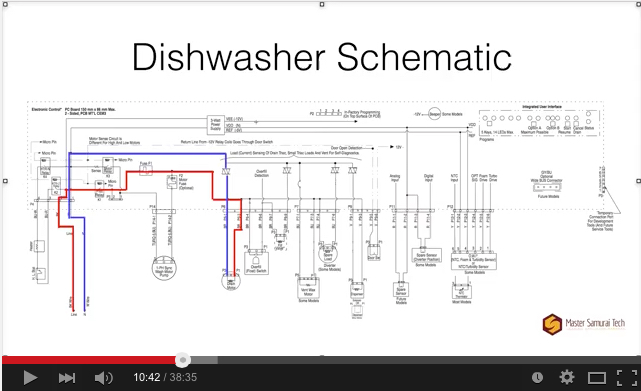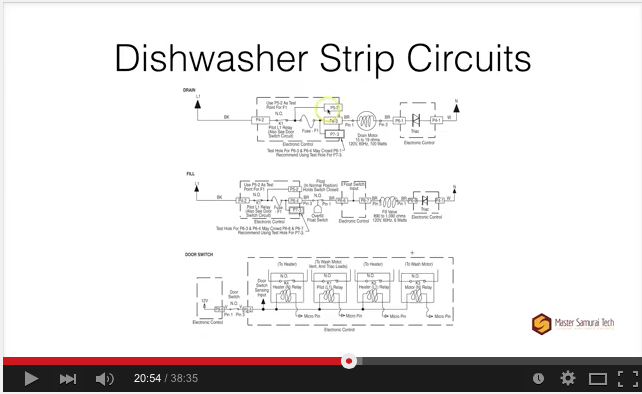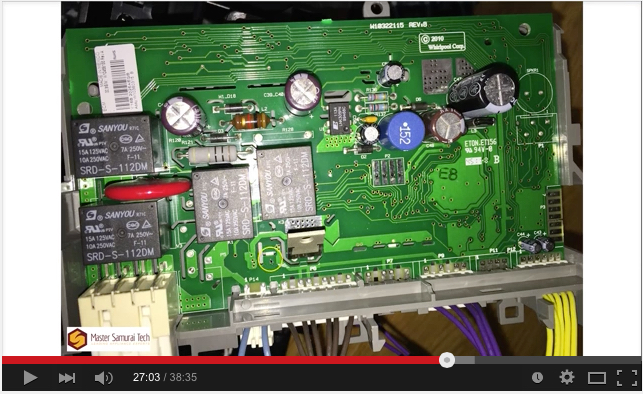Join Samurai Appliance Repair Man on a trek into the sealed system bowels of a warm refrigerator. Watch with amazement as I show you how to make a definitive diagnosis of a sealed system failure in this fridge using common, inexpensive tools that every appliance tech (who's worth their salt) and most DIYers already own: a clamp-on ammeter and an IR temperature gun.
Howl, o ye nations! Clap your hands, o ye peoples! No need for line piercing valves and pressure gauges IF you understand how sealed systems work, which we teach in stunning multi-media detail in the Refrigerators Troubleshooting and Repair Training Course here at the Samurai Tech Academy.
So let's look at where that current draw comes from and apply that to the compressor in the video.
Compressors are rated by horsepower. Horsepower is a measure of mechanical work. Watts are also a measure of work but the work in this case is electrical. The nameplate rating on compressors and motors gives the horsepower of the motor because you're usually interested in how much torque that motor can produce at a given voltage.
Horsepower is a measure of mechanical work just like watts is a measure of electrical work. You can convert horsepower to watts using the following conversion:
1 horsepower (hp) = 746 watts
The compressor in the video is an Embraco EGZ80HLP, a typical 1/3 hp compressor. 1/3 hp = 246 watts. Let's ignore mechanical inefficiencies in converting electrical work (watts) into mechanical work (horsepower) and run the numbers:
P= I * E => I = P / E = 246 watts / 120 vac = 2 amps
So that's where the "2 amps or maybe a little less" statement comes from in the video.
Let's compare this calculated current draw with a measured draw from the exact same compressor model (1/3 hp) in a different refrigerator, different service call, shown in the video below starting at 3:05 in, go ahead and fast forward:
I measured 1.6 amps in the video above but calculated 2 amps. Some of that difference is due to the run capacitor installed on the compressor. The purpose of the run cap is to smooth out the pulses in the motor and help it draw less current while running. But I'd say that qualifies as "2 amps or maybe a little less."
So what's to be done for this wayward fridge? Take it to da dump!
The cold, economic reality is that the EPA ozone depletion regulations have made doing sealed system work so prohibitively expensive (if it's to be done legally, correctly, and charged at a fair rate) that, in most cases, it simply does not make economic sense to do it anymore. Unless the fridge is either a built-in unit or is under some type of warranty, then sealed system failure is, for all practical purposes, a "total" event as far as the customer is concerned.




 When enrolling technicians in an MST Academy appliance repair training course, most business owners will do the registration/enrollment process themselves so that they will have the username and password for each tech, and can therefore log in as desired to check on a tech’s progress. Here’s how to do that:
When enrolling technicians in an MST Academy appliance repair training course, most business owners will do the registration/enrollment process themselves so that they will have the username and password for each tech, and can therefore log in as desired to check on a tech’s progress. Here’s how to do that: Online training courses have become a huge benefit to adult learners. From individual how-to training for a specific task (like Microsoft’s online software tutorials) to massive open online courses (MOOCS) offered by universities to students worldwide, online education brings a vast array of opportunities within reach of learners in every field imaginable — all you need is access to a computer, some time, and the determination to succeed in your chosen topic.
Online training courses have become a huge benefit to adult learners. From individual how-to training for a specific task (like Microsoft’s online software tutorials) to massive open online courses (MOOCS) offered by universities to students worldwide, online education brings a vast array of opportunities within reach of learners in every field imaginable — all you need is access to a computer, some time, and the determination to succeed in your chosen topic.